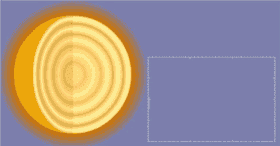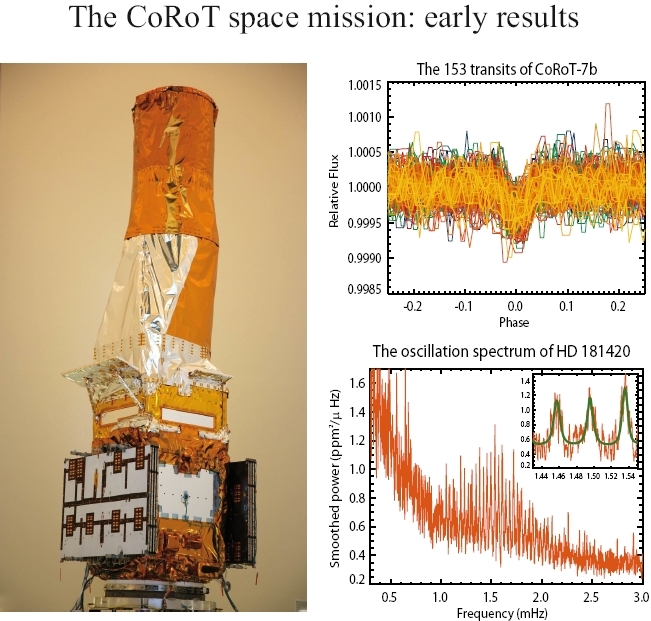27 October 2009
A bag of surprises

“CoRoT has met all scientists’ expectations and more,” says Olivier La Marle, in charge of the CoRoT programme at CNES. “And as the spacecraft is still in great shape, CNES has decided to extend the mission with the backing of its national and international partners (1).”
CoRoT’s great strength is its remarkable sensitivity.
Its sensors are capable of detecting the tiniest dips in the light emitted by stars, as little as 1/10,000th of their brightness. Some of these variations reveal the inner workings of a star.
Others are the sign that a planet - an exoplanet, to be precise - has crossed in front of the star.

CoRoT’s rich three-year harvest of data has shown scientists that our Sun is not the only star that “sparkles”. They have also discovered that certain stars much older and more massive than the Sun, for example red giants, also vibrate.
Another pleasant surprise is that CoRoT has proven very good at detecting small exoplanets, those more like Earth than Jupiter.
“It has discovered CoRoT-7b, the densest and only rocky exoplanet found to date, very like our Earth,” says Olivier La Marle. “Such discoveries are true firsts!”
Super Earths in sight

Statistically, we expected CoRoT to make new discoveries. But it was the first space mission designed to hunt for exoplanets and the first to use the planetary transit detection method,” recalls Olivier La Marle. “We expected some surprises and we weren’t disappointed!”.
To salute CoRoT’s achievements, the Astronomy & Astrophysics review published a special issue on 22 October 2009 devoted to the spacecraft’s scientific results.
But CoRoT isn’t resting on its laurels, with an already packed observing programme planned for the 3 years ahead.
In stellar seismology, we will be focusing on families of stars never observed before,” explains Olivier La Marle. “We also plan to take another look at certain stars whose behaviour has intrigued researchers.”

The hunt for exoplanets will also continue,” he adds. “Besides the hope of finding new exoplanets, we’re going to look especially for super Earths, that is, planets slightly more massive than our own but much closer to their parent star.”
The shorter a planet’s orbital period (2), the greater its chances of crossing in front of its star and being picked up by CoRoT. Scientists are betting that we ain’t seen nothing yet!
(1) CNRS-INSU and the Observatoire de Paris, Austria, Belgium, Brazil, Germany, Spain and ESA.
(2) The time it takes a planet to orbit its star.